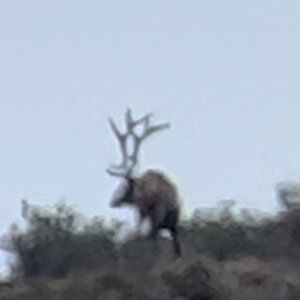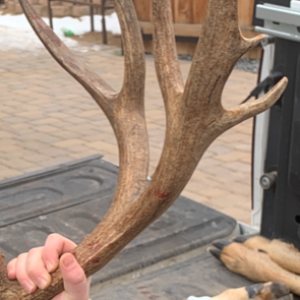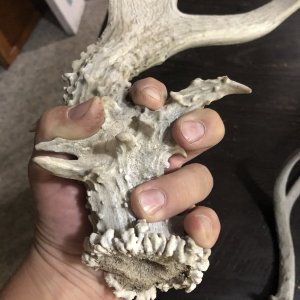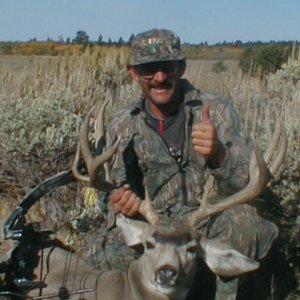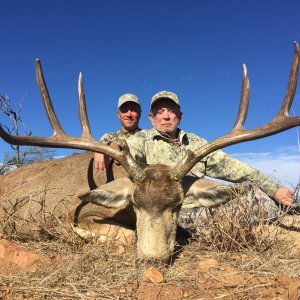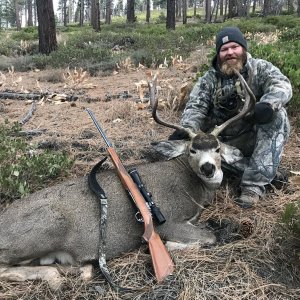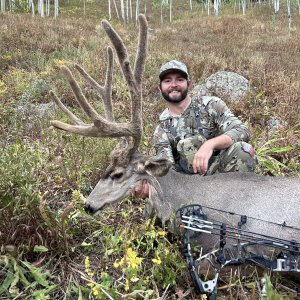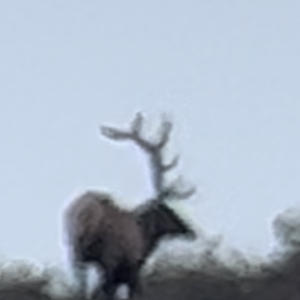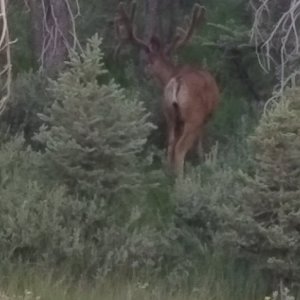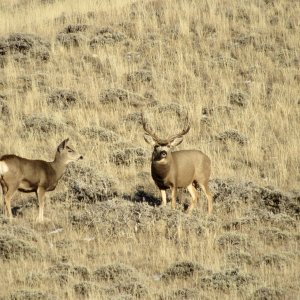NeMont
Long Time Member
- Messages
- 12,632
Deer and elk hunting outlook ?exceptional? across much of Region 6
Across almost all of northeast and north-central Montana, this will be a very good fall to be a deer or elk hunter.
Thanks to a succession of mild winters and generally favorable forage conditions, big-game populations are near or above their long-term averages across Fish, Wildlife & Parks? Region 6. That includes elk, mule deer and white-tailed deer.
?From a hunter?s standpoint, our big-game picture is exceptional for this fall?s seasons,? says Harold Wentland, wildlife manager for Region 6. ?I expect hunters will see abundant elk and deer across the region, and for those who are selective, chances of connecting with a mature buck or bull will be good.?
Montana?s archery deer and elk season is underway and ends Oct. 13. The rifle deer and elk season opens Oct. 21 and extends through Nov. 25. Check this year?s hunting regulations for restrictions and season dates in specific hunting districts, because areas can vary from the statewide standard season.
Here?s a closer look at the hunting outlook for various species across Region 6:
WHITE-TAILED DEER
A number of easy winters and abundant forage has boosted the number of whitetails across the region, creating nuisance population levels in some core riparian habitats and increasing the number of deer in secondary habitats such as CRP and upland cropland.
Especially in the irrigated agriculture of the lower Milk and Missouri rivers and the region?s larger streams, whitetail numbers are at or near record highs. West of Malta, whitetail populations along the Milk River have nearly recovered from the widespread die-off caused by epizootic hemorrhagic disease (EHD) several years ago. While EHD, and a closely related malady known as blue-tongue disease, have impacted deer populations elsewhere in eastern Montana, there's no evidence of significant mortality in Region 6, says Wentland.
From a regional perspective, the best whitetail hunting this fall will be on private land in the Milk and Missouri river bottoms, especially on working farms enrolled in the Block Management program. In upland habitats of Sheridan, Daniels and Roosevelt counties, deer numbers are bouncing back from the winter of 2003-04 and have returned to average levels.
It's a good year to pick up additional antlerless whitetail Deer B tags in Region 6. Because of the abundant whitetail population, FWP has increased the quota of antlerless whitetail Deer B tags available to Montana residents from 2,500 last year to 3,500 this year. The non-resident quota for these antlerless whitetail Deer B licenses - valid anywhere in Region 6 - is 1,500. Each hunter can have up to seven antlerless Deer B licenses in addition to his or her Deer A license.
?These Deer B tags are important management tools,? says Wentland. ?You can harvest some fine meat for the table and help out landowners who are allowing access by taking home a few does.?
MULE DEER
The Region 6 mule deer picture is universally bright, with some survey areas in Hill, Blaine and Phillips counties well above their long-term average population. Significant mule deer increases have also been recorded in extreme northeast Montana?s Sheridan and Daniels counties. In the Valley and McCone counties, mule deer numbers are closer to their long-term averages.
Because of the significant increase in mule deer numbers over the last several years, FWP has boosted the antlerless mule Deer B licenses in many hunting districts. In districts 680 and 690, which include southern Chouteau, Hill and Blaine counties, the Bears Paw Mountains and the Missouri River Wild and Scenic River corridor, Deer B licenses in both districts were bumped from 300 last year to 500 this year. To the north, in District 600, where landowners have complained of crop-eating muleys, Deer B licenses were increased from 200 last year to 500 this year.
In Hunting District 611, which covers much of northern Phillips County, mule deer have recovered from the low populations of the late 1990s and fawn survival has boosted the population above its long-term average. To reduce numbers of deer in farmers? haystacks and alfalfa, FWP increased the antlerless Deer B license quota from 300 last year to 500 this fall.
Mule deer numbers in District 670, which covers Valley County north of U.S. Highway 2, have been steadily increasing for the past four years and are above their long-term average population. Antlerless Deer B licenses were increased by 400 to 1,000 this year in District 670.
In Hunting District 620 and adjacent District 630 in southern Phillips and Valley counties, mule deer numbers are also above their long-term averages, thanks to good fawn survival the last two winters. Biologist Kelvin Johnson says hunters may see relatively few 3- and 4-year-old bucks, a reflection of mortality from the hard winter of 2003-04, but numbers of older and younger bucks are abundant in both districts.
Mule deer in Hunting District 652, in McCone County, have been crawling back from a sharp downturn in 2005 and are nearing their long-term average population thanks to strong fawn crops the last two years.
Finally, mule deer numbers in District 640 in Sheridan and Daniels counties are well above the long-term average and have expanded their distribution into marginal habitat such as CRP and cropland, says biologist Scott Thompson. The mule deer buck season in District 640 is limited to the first three weeks of the rifle season.
ELK
Elk numbers in the core habitats of Region 6 - the Bears Paw Mountains and Missouri River Breaks - are about double the population objectives dictated by habitat and landowner tolerance and the number of special hunting permits has been adjusted upward this fall to trim the population.
In the Bears Paw - District 690 - more than 400 elk were observed in winter surveys. That's well above the 250-head population objective and the expanding herd is causing crop damage in the mountains. This year the number of special antlerless youth elk permits was increased from 5 to 25, either-sex licenses in District 690 were boosted from 25 to 30 and antlerless second-elk license numbers were increased from 100 to 150 in an effort to reduce the population.
Record-high numbers of elk were also observed last winter in the Missouri River Breaks. Biologist Mark Sullivan counted more than 3,100 head of elk in south Phillips County?s districts 621 and 622. This fall young hunters are helping manage the population. The special antlerless elk permits for these hunters aged 12-15 was boosted from 50 last year to 100 this year.
To the east, in District 631 and 632 in southern Valley County, more than 900 elk were observed in winter surveys. Special permit quotas are unchanged from last year?s near-record high numbers.
Rifle elk harvest in the Breaks is highly dependent on weather conditions that allow hunters access to the best elk habitat and on hunters? ability to hunt away from roads.
?Especially on the Charles M. Russell Wildlife Refuge, elk are quickly pushed into roadless areas, so hunters are urged to get off the roads and hike to have success,? says FWP biologist Mark Sullivan. ?That means they also need to be prepared, with game carts or backpacks or even horses, to get their elk out of remote areas.?
--- FWP ---
Andrew McKean
Montana Fish, Wildlife & Parks
54078 U.S. Highway 2 W.
Glasgow, MT 59230
(406) 228-3723
[email protected]
Across almost all of northeast and north-central Montana, this will be a very good fall to be a deer or elk hunter.
Thanks to a succession of mild winters and generally favorable forage conditions, big-game populations are near or above their long-term averages across Fish, Wildlife & Parks? Region 6. That includes elk, mule deer and white-tailed deer.
?From a hunter?s standpoint, our big-game picture is exceptional for this fall?s seasons,? says Harold Wentland, wildlife manager for Region 6. ?I expect hunters will see abundant elk and deer across the region, and for those who are selective, chances of connecting with a mature buck or bull will be good.?
Montana?s archery deer and elk season is underway and ends Oct. 13. The rifle deer and elk season opens Oct. 21 and extends through Nov. 25. Check this year?s hunting regulations for restrictions and season dates in specific hunting districts, because areas can vary from the statewide standard season.
Here?s a closer look at the hunting outlook for various species across Region 6:
WHITE-TAILED DEER
A number of easy winters and abundant forage has boosted the number of whitetails across the region, creating nuisance population levels in some core riparian habitats and increasing the number of deer in secondary habitats such as CRP and upland cropland.
Especially in the irrigated agriculture of the lower Milk and Missouri rivers and the region?s larger streams, whitetail numbers are at or near record highs. West of Malta, whitetail populations along the Milk River have nearly recovered from the widespread die-off caused by epizootic hemorrhagic disease (EHD) several years ago. While EHD, and a closely related malady known as blue-tongue disease, have impacted deer populations elsewhere in eastern Montana, there's no evidence of significant mortality in Region 6, says Wentland.
From a regional perspective, the best whitetail hunting this fall will be on private land in the Milk and Missouri river bottoms, especially on working farms enrolled in the Block Management program. In upland habitats of Sheridan, Daniels and Roosevelt counties, deer numbers are bouncing back from the winter of 2003-04 and have returned to average levels.
It's a good year to pick up additional antlerless whitetail Deer B tags in Region 6. Because of the abundant whitetail population, FWP has increased the quota of antlerless whitetail Deer B tags available to Montana residents from 2,500 last year to 3,500 this year. The non-resident quota for these antlerless whitetail Deer B licenses - valid anywhere in Region 6 - is 1,500. Each hunter can have up to seven antlerless Deer B licenses in addition to his or her Deer A license.
?These Deer B tags are important management tools,? says Wentland. ?You can harvest some fine meat for the table and help out landowners who are allowing access by taking home a few does.?
MULE DEER
The Region 6 mule deer picture is universally bright, with some survey areas in Hill, Blaine and Phillips counties well above their long-term average population. Significant mule deer increases have also been recorded in extreme northeast Montana?s Sheridan and Daniels counties. In the Valley and McCone counties, mule deer numbers are closer to their long-term averages.
Because of the significant increase in mule deer numbers over the last several years, FWP has boosted the antlerless mule Deer B licenses in many hunting districts. In districts 680 and 690, which include southern Chouteau, Hill and Blaine counties, the Bears Paw Mountains and the Missouri River Wild and Scenic River corridor, Deer B licenses in both districts were bumped from 300 last year to 500 this year. To the north, in District 600, where landowners have complained of crop-eating muleys, Deer B licenses were increased from 200 last year to 500 this year.
In Hunting District 611, which covers much of northern Phillips County, mule deer have recovered from the low populations of the late 1990s and fawn survival has boosted the population above its long-term average. To reduce numbers of deer in farmers? haystacks and alfalfa, FWP increased the antlerless Deer B license quota from 300 last year to 500 this fall.
Mule deer numbers in District 670, which covers Valley County north of U.S. Highway 2, have been steadily increasing for the past four years and are above their long-term average population. Antlerless Deer B licenses were increased by 400 to 1,000 this year in District 670.
In Hunting District 620 and adjacent District 630 in southern Phillips and Valley counties, mule deer numbers are also above their long-term averages, thanks to good fawn survival the last two winters. Biologist Kelvin Johnson says hunters may see relatively few 3- and 4-year-old bucks, a reflection of mortality from the hard winter of 2003-04, but numbers of older and younger bucks are abundant in both districts.
Mule deer in Hunting District 652, in McCone County, have been crawling back from a sharp downturn in 2005 and are nearing their long-term average population thanks to strong fawn crops the last two years.
Finally, mule deer numbers in District 640 in Sheridan and Daniels counties are well above the long-term average and have expanded their distribution into marginal habitat such as CRP and cropland, says biologist Scott Thompson. The mule deer buck season in District 640 is limited to the first three weeks of the rifle season.
ELK
Elk numbers in the core habitats of Region 6 - the Bears Paw Mountains and Missouri River Breaks - are about double the population objectives dictated by habitat and landowner tolerance and the number of special hunting permits has been adjusted upward this fall to trim the population.
In the Bears Paw - District 690 - more than 400 elk were observed in winter surveys. That's well above the 250-head population objective and the expanding herd is causing crop damage in the mountains. This year the number of special antlerless youth elk permits was increased from 5 to 25, either-sex licenses in District 690 were boosted from 25 to 30 and antlerless second-elk license numbers were increased from 100 to 150 in an effort to reduce the population.
Record-high numbers of elk were also observed last winter in the Missouri River Breaks. Biologist Mark Sullivan counted more than 3,100 head of elk in south Phillips County?s districts 621 and 622. This fall young hunters are helping manage the population. The special antlerless elk permits for these hunters aged 12-15 was boosted from 50 last year to 100 this year.
To the east, in District 631 and 632 in southern Valley County, more than 900 elk were observed in winter surveys. Special permit quotas are unchanged from last year?s near-record high numbers.
Rifle elk harvest in the Breaks is highly dependent on weather conditions that allow hunters access to the best elk habitat and on hunters? ability to hunt away from roads.
?Especially on the Charles M. Russell Wildlife Refuge, elk are quickly pushed into roadless areas, so hunters are urged to get off the roads and hike to have success,? says FWP biologist Mark Sullivan. ?That means they also need to be prepared, with game carts or backpacks or even horses, to get their elk out of remote areas.?
--- FWP ---
Andrew McKean
Montana Fish, Wildlife & Parks
54078 U.S. Highway 2 W.
Glasgow, MT 59230
(406) 228-3723
[email protected]

